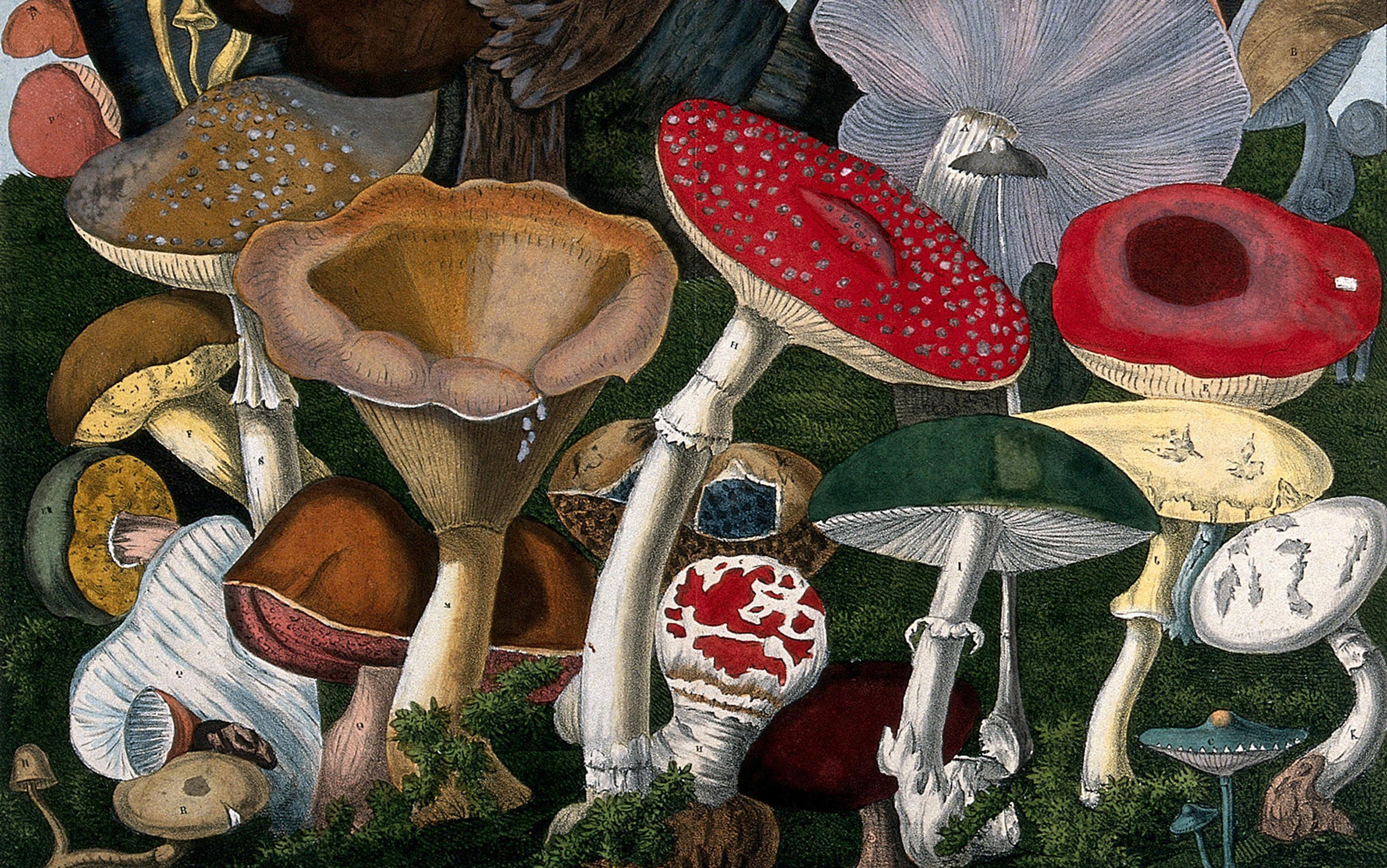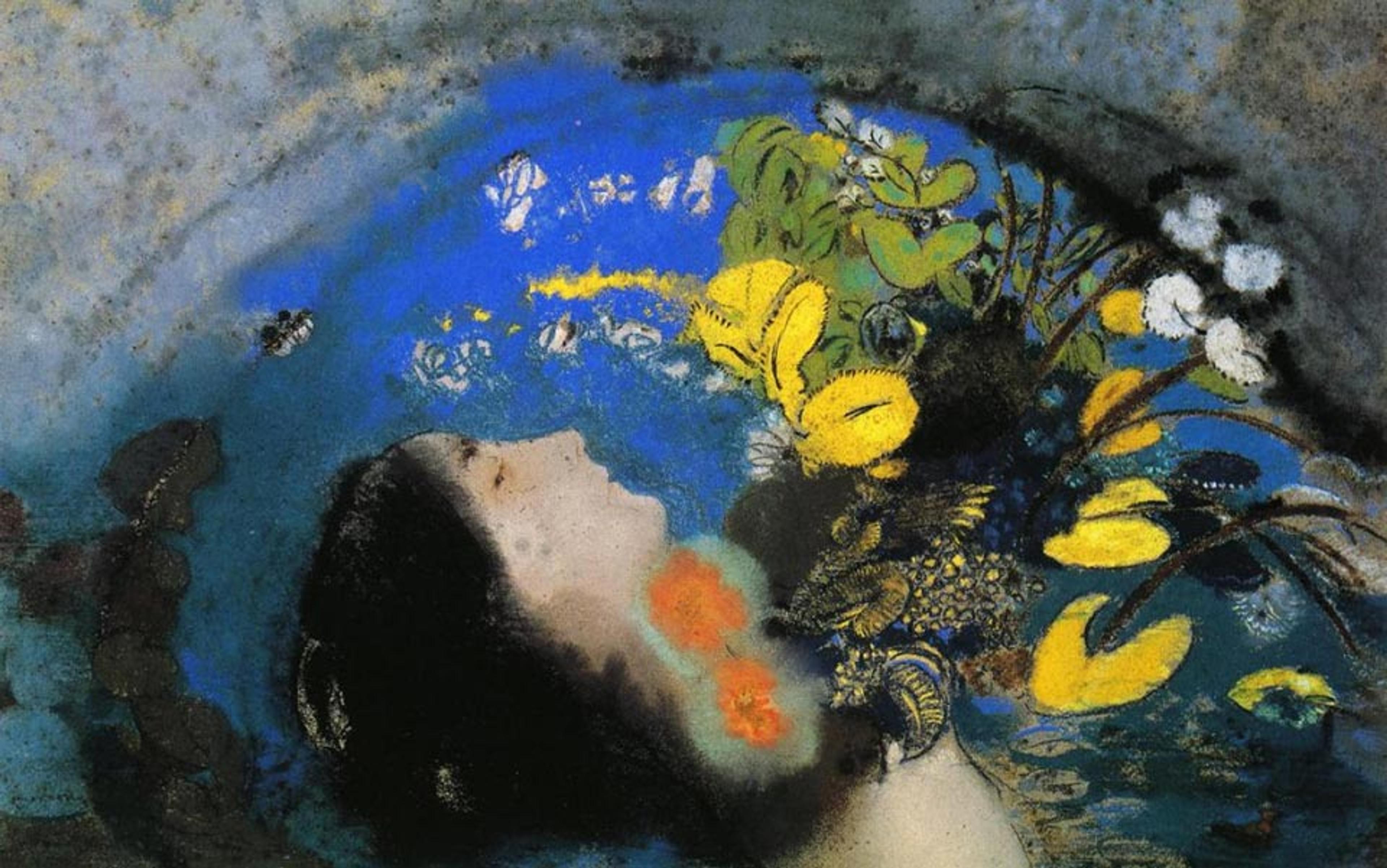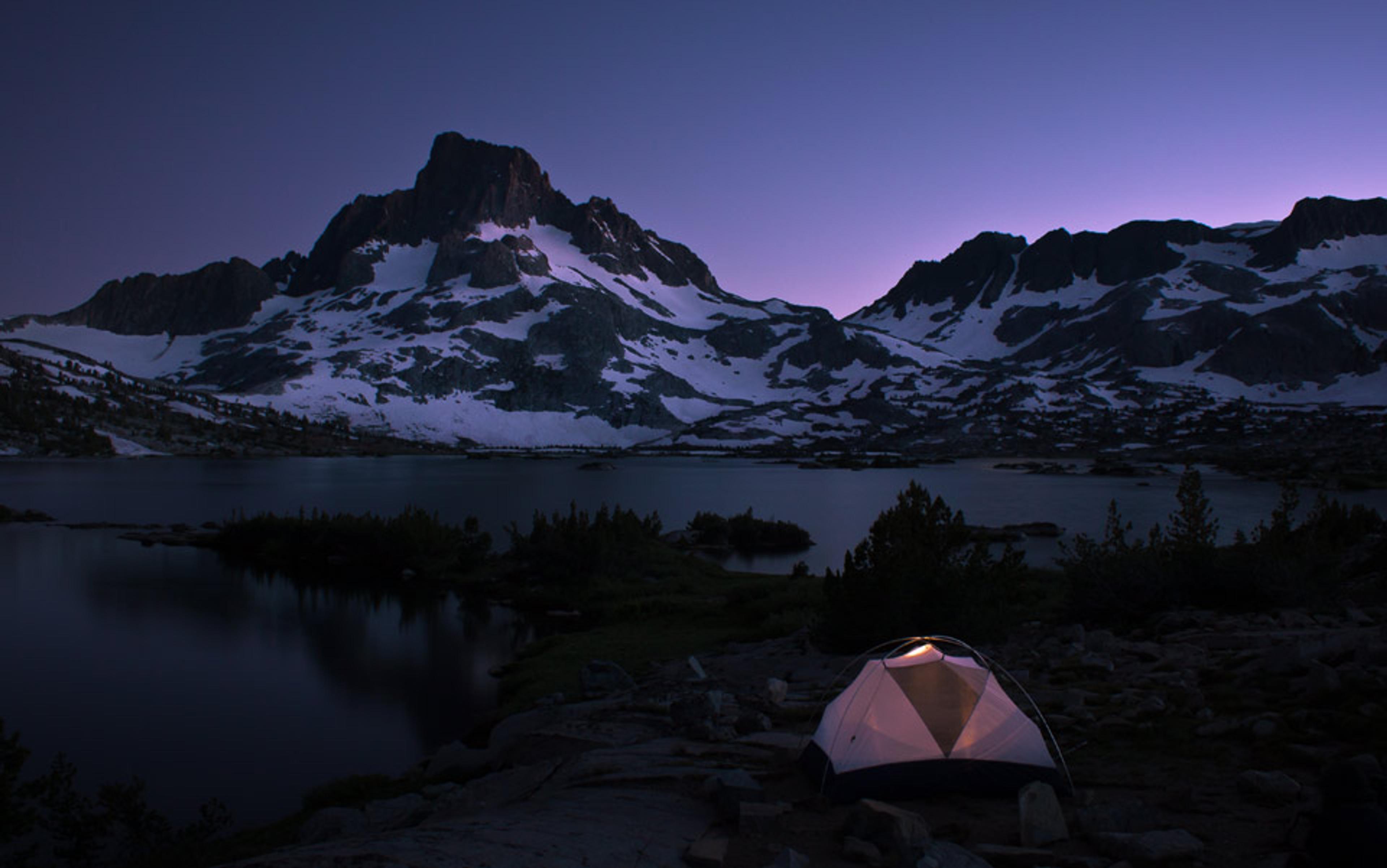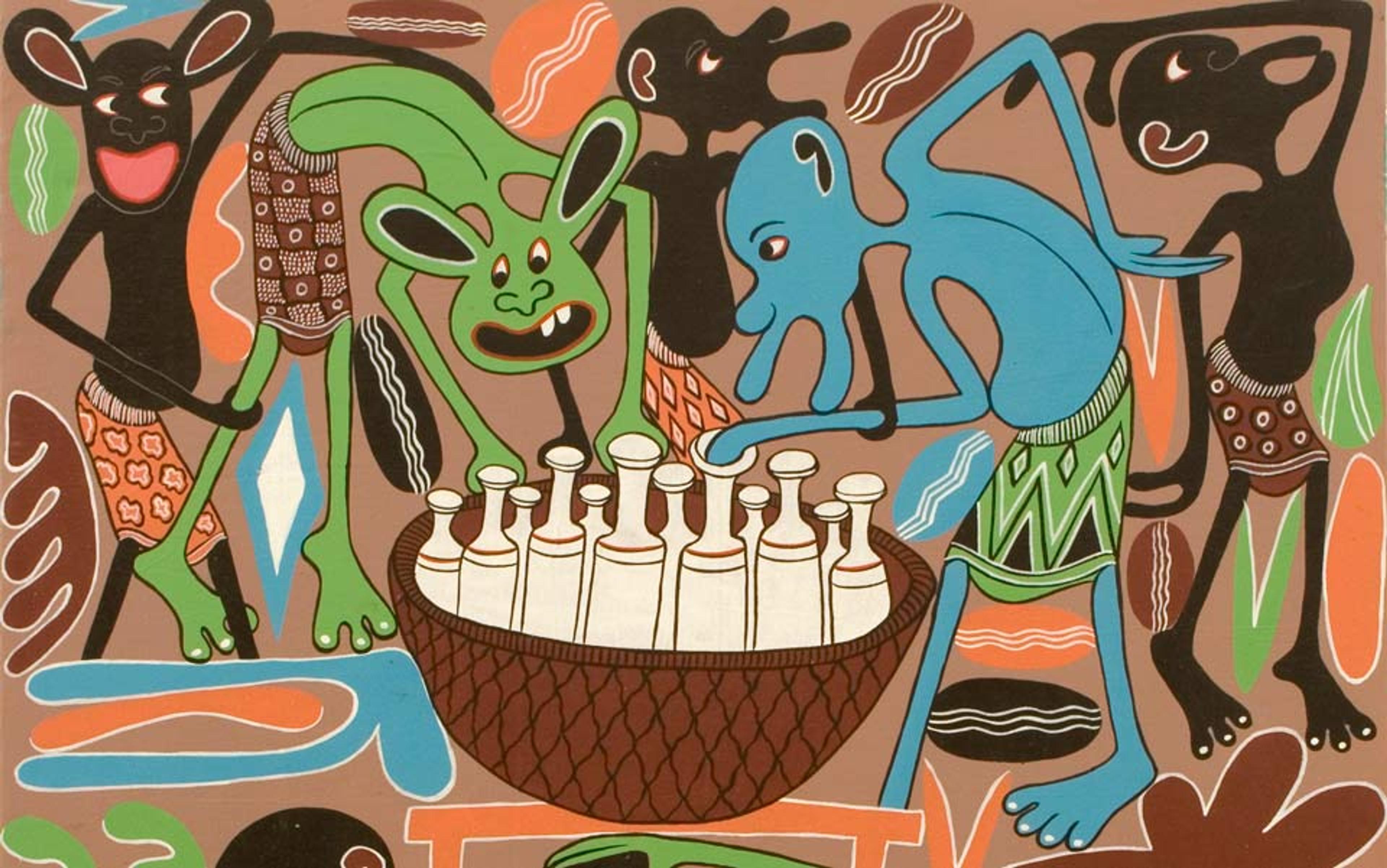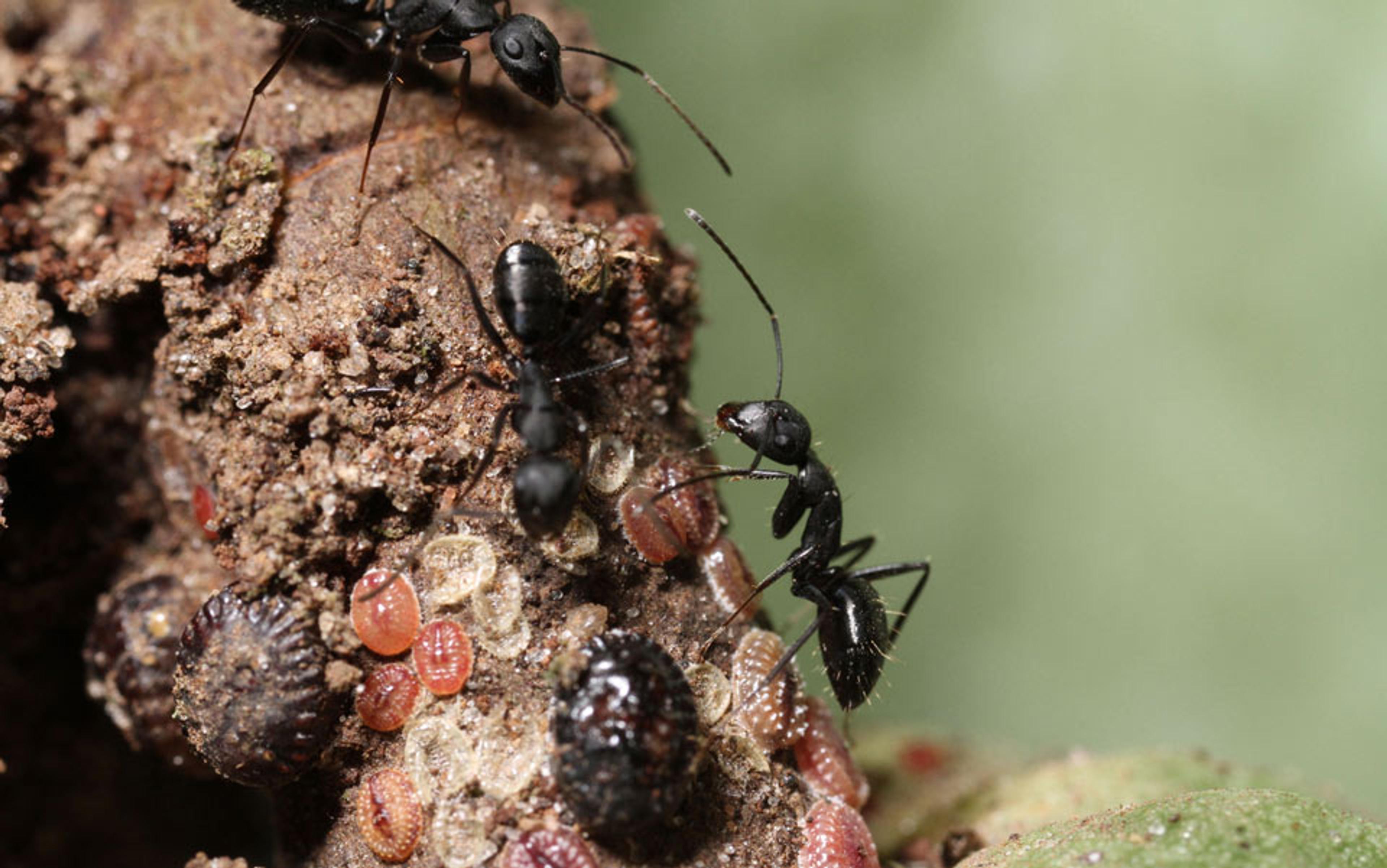I decided to move out of London earlier this year and spent much of the summer in the Lake District where my boyfriend works as a mountain guide. When the sun shone, we swam in the river where it ran still and deep, and on quiet days — to stave off fears about work, unanswered emails, unpaid invoices, my imminent poverty — I pulled on my boots, left the house and went out foraging in the hedgerows.
By June, the broad leaves of wild garlic had sprung up in place of the bluebells, a strong perfume announcing their arrival on the breeze. Wild strawberries, each barely a mouthful, came next, and plums. Then, when the leaves began to change, the raspberries, brambles and hazelnuts hung in heavy clusters from their branches. There is something deeply satisfying about returning home and turning out your pockets into the fridge. To take on the role of gatherer, food provider. September was spent sticky-fingered, lips stained crimson from the juice. Peeling, slicing, stewing.
When the rain set in, the berries turned to mush. But for the first time I noticed how the forest floor changed as the fungi began to emerge. Small grey caps nudged each other out of the earth, woody shelf-like brackets protruded from the trees, huddles of long-necked toadstools took shelter under the low branches. Here was a rich seam, entirely untapped. It seemed wasteful, somehow, for us to stand and watch as they grew, matured, and rotted away uneaten, then drive to the supermarket to buy kilograms of mass-grown mushrooms in plastic trays. And so, armed with a copy of the Collins Mushrooms and Toadstools of Britain and Europe, we wandered through the woods at Grizedale.
Every few feet, we stumbled across a new, unidentified species. What about this? I called, waving him over. An Amanita excelsa, do you think? We squinted at the picture in the book, compared it to our specimen, side by side. It had the same soft white stalk, a felty skirt, pretty tan cap with pale scaly spots. Beside each entry in the book, there is a symbol: a smiling face or a skull and crossbones. Edible or poisonous? Next to ‘Amanita excelsa’ there was a smiley face. But, looking carefully, the colour didn’t seem an exact match for our toadstool. Different lighting? Natural variance? Or a wholly separate species?
‘Edible, mild taste; smell of turnip’ said the guide. Fine. But then, wait: ‘NB. Danger of confusing A. excelsa with A. pantherina and the very rare A. regalla.’ Hmmm. I leafed back through the book. A. pantherina did look similar, but it had the skull and crossbones. ‘Poison acts like A. phalloides but is stronger,’ it warned. I flicked back another few pages. ‘A. phalloides… causes the destruction of the liver and even small doses can be fatal. The poison is active for years and cannot be destroyed by cooking. 50g is fatal to a human being.’
We looked at each other, dropped the mushroom and walked on.
Mushrooms are bloodthirsty. The clues are in the common names: destroying angels, devil’s boletes, poison pies, beechwood sickeners. The Roman emperor Claudius, the Habsburg Charles VI and even the Buddha are all thought to have succumbed to their poison. While walking through a Highland estate in 2008, Nicholas Evans, the author of The Horse Whisperer, picked some brownish wild mushrooms that he took to be porcini. He and his wife and brother-in-law ate them fried with butter and parsley. And then, one by one, their kidneys began to fail. (Evans received a replacement kidney from his daughter, and his wife accepted one from a friend, but his brother-in-law is yet to find a donor. He must still undergo five hours of dialysis several times a week).
In May this year, British newspapers carried stories about a woman who picked handsome golden toadstools from her garden for a soup. Honey-scented, pleasant tasting. Only later, in the emergency department of the nearest hospital, did she learn their name: Amanita phalloides — death caps, as they are commonly known. Half a mushroom would have been enough to kill her, the coroner said. She’d eaten five.
Fungi seem to speak a different language entirely
When we hunt for mushrooms, we encounter a species with which we have no natural affinity. Beautiful pale toadstools might be toxic, while twisted black growths could be edible. Their appearance makes no intuitive sense. Colouring and scent in plants and animals is commonly used as a form of communication: ‘Don’t eat me! I’m poisonous!’ Or ‘I taste good!’ Fungi seem to speak a different language entirely.
Yet it is not altogether indecipherable, and with careful study one can learn to tell them apart. I began to teach myself: comparing picked mushrooms to the pictures in a book, reading the checklist of qualities beneath each name. This one here: is it long-stemmed or bulbous? Does it bleed milk? Are the gills crowded or porous? Is the cap slimy or dry? Does it taste bitter or spicy? Does it smell?
There is, I discovered, a thriving online community of mycology devotees who swap tips on the best fungi gathering sites, offering second opinions on mystery mushrooms and, location permitting, hunting together in woods nearby. They are cautious and methodical. Even so, these shoegazing nature-lovers have one of the most dangerous hobbies in the world. In the five years between 1993 and 1997, there were 6,317 cases of mushroom poisoning in California alone, according to the Western Medical Journal. Sixty-one of those patients had to be admitted to a critical care unit. Every time mycologists bring home a fresh batch, they risk an upset stomach at the very least, and at worst a slow and painful death. As the Pulitzer Prize-winning poet Mary Oliver wrote in ‘Mushrooms’ (2005):
those who know
walk out to gather, choosing
the benign from flocks
of glitterers, sorcerers,
russulas,
panther caps,
shark-white death angels
in their town veils
looking innocent as sugar
but full of paralysis:
to eat
is to stagger down
To eat is to stagger down indeed. The toxins in the death cap mushroom make themselves known within 24 hours, as the body is racked with abdominal cramping, vomiting and diarrhoea. After a day or so, the symptoms die down and the sufferer recovers, gets up from his bed and thanks God for His mercy. But he has not been saved. Silently, secretly, the poison is invading his body, shutting down his internal organs, wreaking irrevocable damage upon his liver and kidneys. Jaundice will follow, then seizures. Within two weeks, he will be dead. There is no antidote.
All of this raises the inevitable question: if the risk is so huge and the pay-off so small, why do it? The identification process is interesting, of course, and mushrooms are pleasant enough to eat. But perhaps the real intrigue arises from the risk itself — and the skill required to sidestep it.
We see something similar with fugu, the Japanese pufferfish, which is served as sashimi, or thin, raw slices. The skin of the pufferfish, as well as its ovaries, eyes, kidneys, liver and intestines, contain a deadly neurotoxin. Poor preparation of fugu results in the near-instantaneous death of the eater. Nevertheless, diners flock to the few restaurants outside Japan with staff qualified to serve it. And one thing is certain: it’s not because of the magnificent taste. Although connoisseurs rhapsodise over fugu’s ‘delicate’ flavour, the general consensus is not enthusiastic. ‘Unusually tough,’ reads one representative review, ‘with a mild fishiness. It lacked almost any flavour of its own.’
The trace of the poison that remains on the plate brings a tingle to the lips and mouth as it goes down — a sensation called shibireru — which adds a frisson to the meal. A non-toxic strain of the fish was developed to much fanfare several years ago, but it never proved popular. Without the danger, fugu lost its appeal. Is this just simple daredevilry, then? Perhaps not only that. There is also a celebration of the expertise that can turn a foodie’s game of Russian roulette into a skilfully played hand of poker. With fugu, it comes from years of specialist training: chefs wishing to serve pufferfish must undergo a rigorous education before sitting both a theory and a practical exam in its preparation. Mycologists, on the other hand, do not need a licence to pick mushrooms, and so the equivalent know-how comes down to conscientious self-study. Hours must be spent poring over field guides, testing for bruising, peeling the caps, nibbling the flesh, preparing the delicate, starlike spore prints overnight. (Trim the stalk, rest the cap gills down on a sheet of paper then cover with a glass. By morning, the mushroom will have released its dusty spores onto the paper below, thus revealing the colour and texture that provides a valuable clue to its identity.)
‘Ultimately, I use a microscope. It gets that geeky when you want to eat different species but you don’t want to die’
‘Just getting used to the terminology in the fungi books can require a dictionary,’ says Melissa Waddingham, who forages for wild mushrooms and truffles on the South Downs in England. ‘I have many books. Not one says it all. I use the internet to help with identification, phone a friend, and, ultimately, I use a microscope. It gets that geeky when you want to eat different species but you don’t want to die.’
Short of death, Waddingham told me, the price of error might include ‘a life on dialysis, liver transplant, organ failure, severe stomach cramps, vomiting, headaches, trippy mood alterations — even from non-hallucinogenic ones — and possibly allergic reactions.
‘God knows why us lunatics take the plunge. I guess I like the elitism of eating wild fungi. It makes me feel special that I can enjoy the wonderful and weird things that most of the population don’t eat. And adrenalin is addictive — I always get the fear after eating a new species even if I’m 100 per cent sure.’
Exactly that. Despite the warnings, despite the meagre returns from the enormous risks, I could not help but be fascinated. Perhaps it was the fungi’s sudden ubiquity that caught my attention, or their other-worldliness. In any case, I was transfixed. But there is only so much you can learn from books. The pictures never quite match up, the sensory descriptions are too opaque for a novice to be certain.
Seeking support, my friend and I tagged along on the coattails of the botanist Paul Nichol, Cumbria’s county recorder of fungi. Paul spends his days tramping through the woods noting the spread and frequency of different species.
We followed him through Whinfell Forest, near Penrith, where he showed us what he looks for. ‘Eyes down,’ he said. ‘Walk slowly. Here, smell this —’ I sniffed a toadstool obediently: the smell of flour. ‘We call that The Miller. Delicious to eat. Now this —’ A fishy, decaying smell. ‘Also good. Surprised?’
A dark, contorted mass got the green light (‘an elastic saddle!’) and then a pestle puffball, pale and phallic with a soft white interior like a marshmallow. He pointed out a clump of rare nidulariaceae fungi behind rock. They look like tiny birds’ nests, full of little spore ‘eggs’ that wait patiently for a well-placed raindrop to scatter them into the moss. ‘Look closely,’ he said. ‘You’ll probably never see these again.’
If we were ever unsure about a mushroom we could try cutting it open, Paul suggested, to see if it changed colour on contact with the air. He demonstrated with a plump green toadstool and rested it on a nearby stump. Within seconds, the flesh was transformed: a deep blue sap flooded the raw surface. ‘The inkstain bolete,’ he explained. ‘You’ll always recognise it that way.’
Some mushrooms can be identified by the trees that they grew under — edible saffron milk caps prefer conifers, for example — and some of those will grow in symbiosis with their trees, feeding them nutrients in return for sugar, growing in neat concentric circles around the trunk like fairy circles.
The toadstool itself is only a tiny part of an enormous unseen, underground mass — the mycelium — that spreads like a cobweb through the soil beneath our feet. ‘In Oregon, loggers stumbled on an underground mycelium that had grown like a mat to cover 2,200 acres,’ Paul said. ‘They think it’s the greatest living organism on the planet.’
A whole world opened up in front of me. It felt as if I’d switched on the television to find an urgent broadcast. Aliens exist! They’ve been here all along! They’re in the lawn, they’re in the woods, they’re in the cracks of the pavement and the bottom of your airing cupboard. World leaders unite as they ask: what happens now? Do we just carry on as before?
Neville Kilkenny remembers keenly this sense of wonder. He was in his early forties, working as a joiner, when his wife bought him a ticket for a day’s ‘fungi foray’ into the woods around Edinburgh as a birthday present. Within two years, he had sold his business to retrain as an apprentice mycologist. ‘There is nothing,’ he told me, ‘and I mean nothing quite like seeing an area of natural forest with its fungi in full flush. I remember the first time I visited Black Wood of Rannoch, a SSSI [site of special scientific interest] in Scotland in mid-August, when there was literally an explosion of fungal diversity. It wasn’t so much a quiet pleasure as I literally shouted out loud for the joy of being there.
‘Inside all of us there is a whoop for joy to be found upon encountering an undisturbed patch of chanterelle or porcini, just waiting to get out.’
Inspired, I returned to the woods. This time I came home with a basket of fresh mushrooms. It was a good harvest: common puffballs, honey fungus, slippery jacks, amethyst deceivers. Or, at least, that’s what I thought they were.
We cleaned them and cooked them. We ate. And then we waited.
